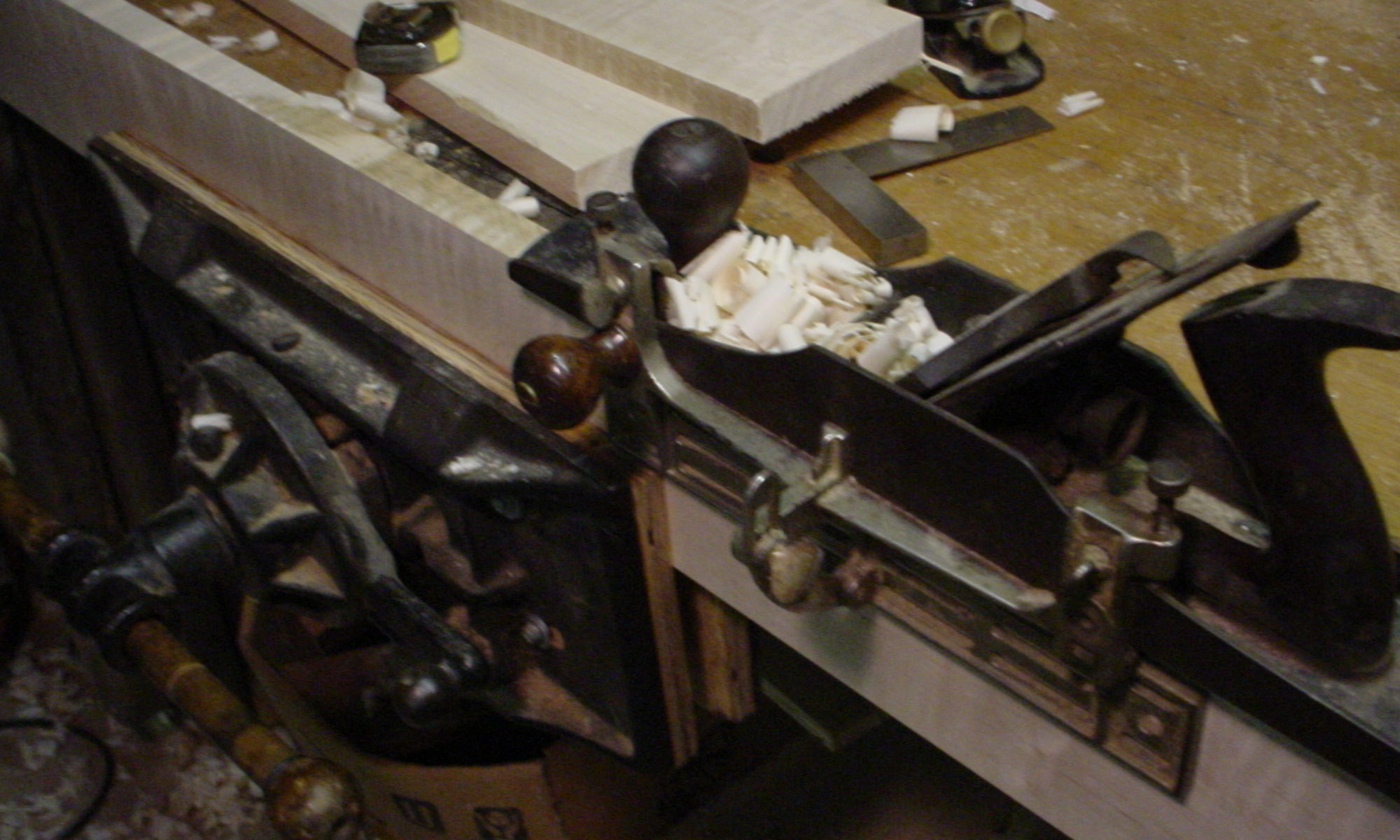Everybody has their own reasons for preferring old tools, but there are a few that lots of people mention:
They work better than modern versions. Sometime in the 1960’s, the Stanley Tool Company stopped seasoning the castings used in their handplanes, and otherwise lowered the quality of those products. When they were asked why, they said, “Our market research shows that most of our planes don’t get used for more than a few days after Christmas”. Not a surprise, then, that old tools were better made when more people used them. Surprisingly (or maybe not), old tools sometimes do modern stuff better than the modern tools do. I’ve sold a lot of push drills to drapery installers who find them lighter and easier to use than a cordless drill when you’re installing drapery hardware in the corner of a window frame. And I know people who use Stanley #80 scrapers to clean up Corian joints.
They’re more comfortable to use. Those old guys had to use them all day, every day, and as a result they evolved in the direction of better ergonomics. Try using a discount-store handsaw for an afternoon — and then try a vintage saw, if the blisters on your hands will let you. There’s a big difference. Same is true of many hammers, axes, and handplanes.
They’re quiet. Lots of my customers have young kids, and want to work in the shop after the kids go to bed. Hand drills, hand saws, and hand pretty-much-everything-except-hammers are all much quieter than their powered counterparts.
They’re kid-friendly. For the same reason that kids start out riding bicycles rather than Harleys, hand tools are a better choice for young apprentices and other novices. Things that are hand-powered are safer and easier to use — and often available in smaller sizes. I’ve sold a lot of eggbeater drills and 12-oz hammers that ended up in the hands of 10-year-olds.
You’re recycling. Why buy a new tool — one that’s engineered to be disposable — when you can get something better for the same price or less?
And yeah, there’s romance. Old tool folks are a pretty pragmatic bunch, but if you could get them together for a group hug (boy, is that ever a concept) they’d tell you that they all feel some connection to the craftspeople who owned the tools before they did. Years ago, I bought a full set of wooden molding planes that had belonged to a single carpenter in Moravia, New York, in the 1850s. His name was stamped into the planes, as owner’s marks often were.
As it happened, the seller knew who the two owners between the original and himself had been. One was the pastor of a local church who had been deeply interested in woodworking, and as a result had hired a German to redo the place with some of the most amazing woodcarving I’ve seen in any American church (it’s pictured below). The other was the owner of the Ithaca hardware store, where I, at age six, bought a nail set as a Christmas gift for my father. And a quick trip to the county historical society showed me that the original owner had been a cabinetmaker and undertaker — not an unusual combination in those days.
It’s not like I feel some sort of mystical connection to Daniel Heald every time I pick up a chisel. But it’s a nice feeling to work with tools that have been used for over a century, most of the time by people who were far better craftsmen than I’ll ever be.

